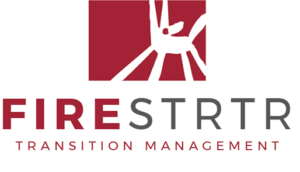Swarm Mode has a declarative scaling model where you state the number of replicas you require. The swarm manager takes action to match the actual number of replicas to your request, creating and destroying containers as necessary. Docker is a tool that is used to automate the deployment of applications in lightweight containers so that applications can work efficiently in different environments in isolation. The –update-delay flag configures the time delay between updates to a service
task or sets of tasks. You can describe the time T as a combination of the
number of seconds Ts, minutes Tm, or hours Th. To reserve a given amount of memory or number of CPUs for a service, use the
–reserve-memory or –reserve-cpu flags.

If this happens, a warning like the
following is logged, substituting the placeholders for real information. Docker node promote and docker node demote are convenience commands for
docker node update –role manager and docker node update –role worker
respectively. Apply constraints when you create a service
to limit the nodes where the scheduler assigns tasks for the service. The Docker swarm is one of the container orchestration tools that allow us to manage several containers that are deployed across several machines. On the other hand, Docker Swarm offers availability controls, and you can easily duplicate microservices. Manager nodes can also move a worker node to another resource in case of host failure.
Promote or demote a node
A service is a description of a task or the state, whereas the actual task is the work that needs to be done. When you assign a task to a node, it can’t be assigned to another node. It is possible to have multiple manager nodes within a Docker Swarm environment, but there will be only one primary manager node that gets elected by other manager nodes. Swarm never creates individual containers like we did in the previous step of this tutorial. Instead, all Swarm workloads are scheduled as services, which are scalable groups of containers with added networking features maintained automatically by Swarm.
For more information on overlay networking and service discovery, refer to
Attach services to an overlay network and
Docker swarm mode overlay network security model. Since Nginx is a web service, it works much better if you publish port 80
to clients outside the swarm. You can specify this when you create the service,
using the -p or –publish flag. There is also a –publish-rm flag to remove a port that
was previously published. The following example assumes a gMSA and its credential spec (called credspec.json) already exists, and that the nodes being deployed to are correctly configured for the gMSA. To create a single-replica service with no extra configuration, you only need
to supply the image name.
Deployment
Not to be confused with Docker (a tool for containerization), Swarm is the platform for managing “Dockerized” containers and is a native mode of Docker. Each node of a Docker Swarm is a Docker daemon, and all Docker daemons interact using the Docker API. Each container within the Swarm can be deployed and accessed by nodes of the same cluster. And you can create your applications to be ready for massive scale from the beginning, starting from a single small server. You can set it up, deploy your applications and do everything on a $5 USD/month server.

You can also use intelligent scheduling and service replication to ensure high availability. By clicking “Post Your Answer”, you agree to our terms of service and acknowledge that you have read and understand our privacy policy and code of conduct. In this write-up, we learned what is Docker Swarm, along with that understood the Swarm mode key concepts and how Docker Swarm works. We also explored Kubernetes vs. Docker Swarm, and why we use Docker Swarm. In the end, we also saw a case study on ‘How to set up Swarm in the Docker ecosystem’.
Docker container management best practices
Read about cloud networking and see what benefits virtual networking has over traditional hardware-based infrastructure. Swarm requires users to perform scaling manually (via Docker Compose YAML templates). However, the platform is faster in deploying containers than what K8s can offer as there’s no complex framework slowing scaling down. A K8s deployment requires you to provide declarative updates to app states while updating Kubernetes Pods and ReplicaSets. You describe a Pod’s desired state, and the controller changes the current state to a desired one.
The Docker platform is open source and available for Windows and Mac, making it accessible for developers working on a variety of platforms. The application provides a control interface between the host operating system and containerized applications. A Docker Swarm is a container orchestration tool running the Docker application. The activities of the cluster are controlled by a swarm manager, and machines that have joined the cluster are referred to as nodes. The
lifecycle of data volumes under swarm services is similar to that under
containers.
Docker Swarm Made Easy: A Step-by-Step Tutorial Series
To deploy an app, you use a YAML file (also known as the Docker Compose File) at the root level. While the platform offers less in-depth control, Docker Swarm has an approximately five times faster deployment time than K8s. K8s deployments rely on the tool’s API and declarative definitions (both differ from standard Docker equivalents). You cannot rely on Docker Compose or Docker CLI to define a container, and switching platforms typically requires you to rewrite definitions and commands. You must also configure cluster IP addresses, define node roles, and set up third-party packages (such as minikube/microk8s).

One of the main benefits of Docker Swarms is increasing application availability through redundancy. In order to function, a docker swarm must have a swarm manager that can assign tasks to worker nodes. By implementing multiple managers, developers ensure that the system can continue to function even if one of the manager nodes fails. Docker recommends a maximum of seven manager nodes for each cluster. Credential spec files are applied at runtime, eliminating the need for host-based credential spec files or registry entries – no gMSA credentials are written to disk on worker nodes. You can make credential specs available to Docker Engine running swarm kit worker nodes before a container starts.
How to Configure a Docker Cluster Using Swarm
For more information on how publishing ports works, see
publish ports. For more information on swarm administration refer to the
Swarm administration guide. Mail us on h[email protected], to get more information about given services. Once the Cluster gets established successfully, an algorithm is used to choose one of them as the leader node, and that algorithm is known as the “Raft consensus”. Here the term “Swarm” comes into play, it is the group that controls all machines available in the Cluster, and every machine that is present or joins the Cluster is considered as a Node. K8s also has self-healing capabilities that divert traffic away from unhealthy pods while replacing faulty ones.
- Manager nodes also help to carry out some of the managerial tasks needed to operate the swarm.
- The Docker platform is open source and available for Windows and Mac, making it accessible for developers working on a variety of platforms.
- The latest format, defined by the
Compose specification
isn’t compatible with the docker stack deploy command. - The –update-delay flag configures the time delay between updates to a service
task or sets of tasks. - Swarm Mode has a declarative scaling model where you state the number of replicas you require.
- This way, if
you lose a rack, the service is still running on nodes on other racks.
A broad understanding of container concepts like Docker is one of the most critical skills that a DevOps engineer should have. You can add this credential to your skillset by enrolling in Simplilearn’s course. Joining a service to a network lets its containers communicate with any other services on the network.
Update the command an existing service runs
Here’s how you can use Swarm mode to set up simple distributed workloads across a fleet of machines. You should use Swarm if you want to host scalable applications with redundancy using a standard Docker installation, no other dependencies required. Clusters benefit from integrated service discovery functions, support for rolling updates, and network traffic routing via external load balancers. docker consulting Mode is great to deploy your application stacks to production, in a distributed cluster, using the same files used by Docker Compose locally. To see the result of using the template, use the docker service ps and
docker inspect commands.

